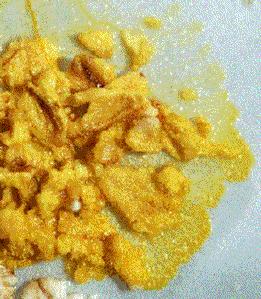

Most water molds (Phylum Oomycota) are aquatic saprobes. Some water molds attack aquatic animals (such as goldfish) or land plants (such as Downy mildew which causes late blight of potatoes and caused the Irish potato famine.). They produce extensive mycelia, some of which become modified to form gamete producing structures. The diploid zygote develops into a resting spore that will germinate into a mycelium producing motile, asexual spores.
Slime molds are heterotrophic, free-living, amoebalike protistans. The cells are phagocytic (a cell that engulfs and consumes foreign material) and can aggregate to form a slimy mass that can migrate to find new food sources. Slime molds also disperse by spores released from stalk like structures.
There are two groups of slime molds: